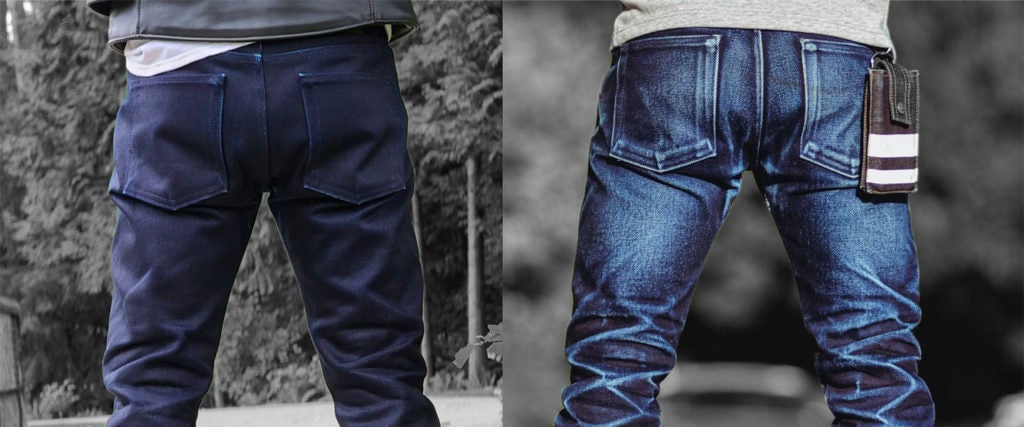It was summer in Belgium, and 36-year-old locomotive engineer Frederick Vande Weygaerde could feel the sweat trickling from his knee cavities down into his steel-toe boots. Weygaerde had been ambling around the conductor’s cabin of a diesel train with a broken AC unit in his double indigo signature Soso selvedge denim jeans. At 50 ounces, they weigh five times as much as your average pair of jeans. “I can’t compare it to anything else, but I could describe it best as a new pair of leather motorcycle pants worn on top of another pair of leather motorcycle pants,” Weygaerde tells me.
Weygaerde is one of more than 800 competitors in this year’s Indigo Invitational, the annual raw denim fading contest in which contestants from around the world compete to see who can achieve the most evocative fades in their jeans — i.e., when the deep blue color of jeans slowly depletes and the white core of the yarn begins to appear.

Unlike regular jeans, raw denim is unwashed, untreated and virtually untouched from the moment it rolls off the loom to when it’s sold in stores. It’s denim in its purest form — crispy and stiff like cardboard. But it’s that stiffness that gives the fabric an unparalleled ability to capture life, in all its resistance, as it’s being lived. That’s because the rigidity creates more defined creases, and since unwashed jeans have experienced no color loss, the more you wear them, the greater the contrast becomes between faded and non-faded areas.
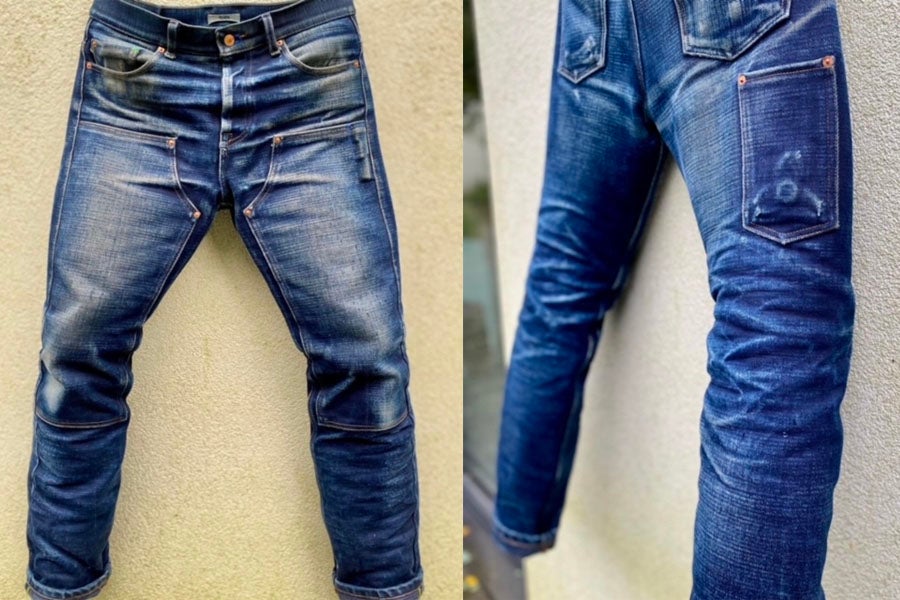
As a first-time competitive fader, Weygaerde chose to compete with a pair of raw denim jeans that literally scraped his legs smooth. “No more hair or dry skin, it all got scraped off!!” he exclaims with pride. When I ask him why he opted to compete in jeans as thick as an iPhone, he simply responds, “Why not, right?”
But not everyone in the competition is a glutton for punishment. “As each person is different, even from themselves over time, each pair of jeans is like a snapshot of that time of a person’s life,” 46-year-old Rob Culhane tells me. For his part, Culhane has been wearing a pair of 24-ounce Strike Gold 1109s during this year’s competition. “For my jeans, you can see the wear of my OG machine era metal wallet,” he continues. “You can see where I keep my lip balm, and you can see how I consistently lean my left leg against the couch while I play games.” His jeans could even give you an indication, if you’re observant enough, that he’s right-handed. “The right side front belt loop of my jeans is pulled out more than the others as that’s where I attach my keys,” he says.
These details are what makes raw denim more of a raconteur than a fabric. “There’s nothing like it that you can write on and chip away at, and kind of scar and then score the surface of it, to tell your story, to tell you what you’ve done that year,” says Bryan Szabo, an Indigo Invitational co-founder.
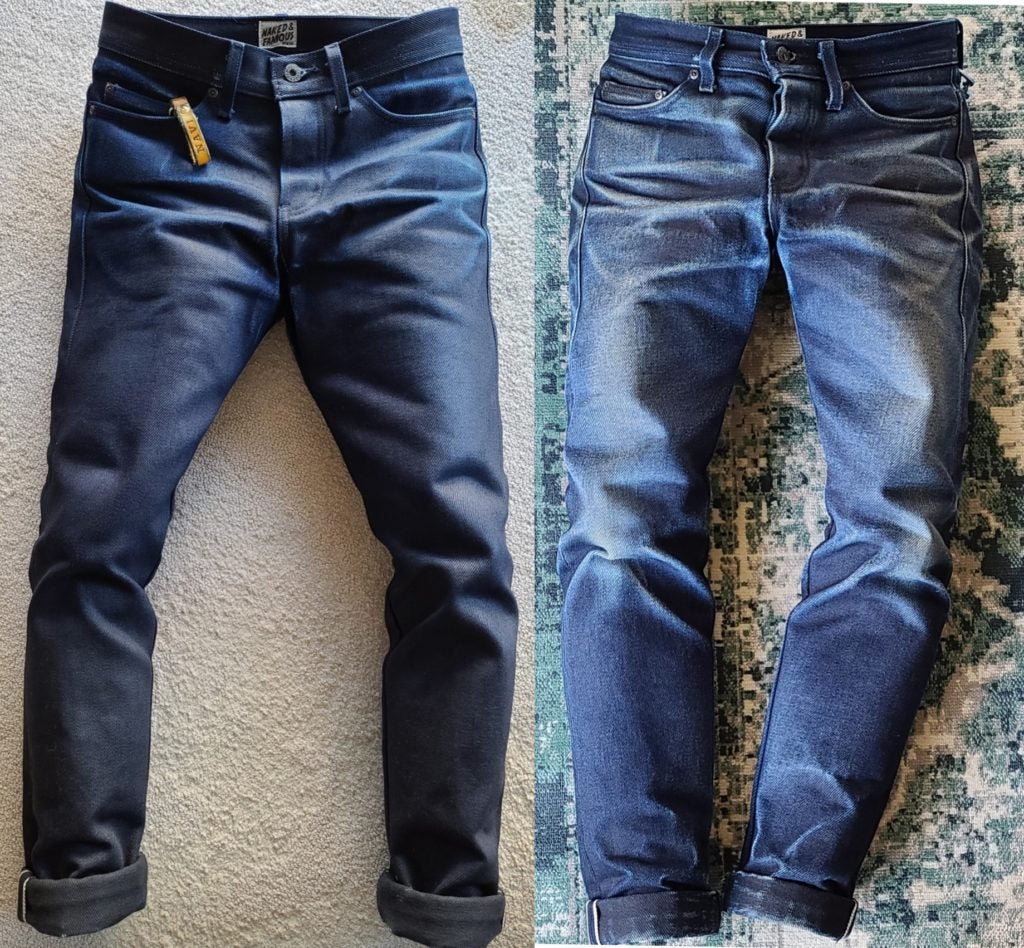
Among Szabo’s favorite raw denim archetypes is new fathers. “They get really white knees on their jeans because they’re crawling around on the floor with their babies,” he explains. “It doesn’t happen in an afternoon. It happens because they’re crawling around with their newborns and their toddlers daily, wearing the same pair of jeans for six months.”
Every year, Indigo Invitational participants must submit photos of their raw denim jeans, preferably with the tags still on. Once the competition has begun, faders are required to submit additional images of their progress. The photos achieve two goals: 1) They add to the excitement of the competition, as many are posted on Instagram; and 2) they discourage faders from cheating, like sanding or pinching the denim. All fades must occur naturally.
Weygaerde is very much the type of father Szabo describes, as he’s constantly playing trains with his four-year-old son. Thanks in part to his jeans, he clearly remembers being on his hands and knees for hours during quarantine, trying to keep his son entertained. “It shows in the knee fades, and because my right femur is about two inches shorter than the left one, the fades on the right leg are positioned higher,” he says. All of these nuances, he hopes, will help put him in the highly coveted Hall of Fades.
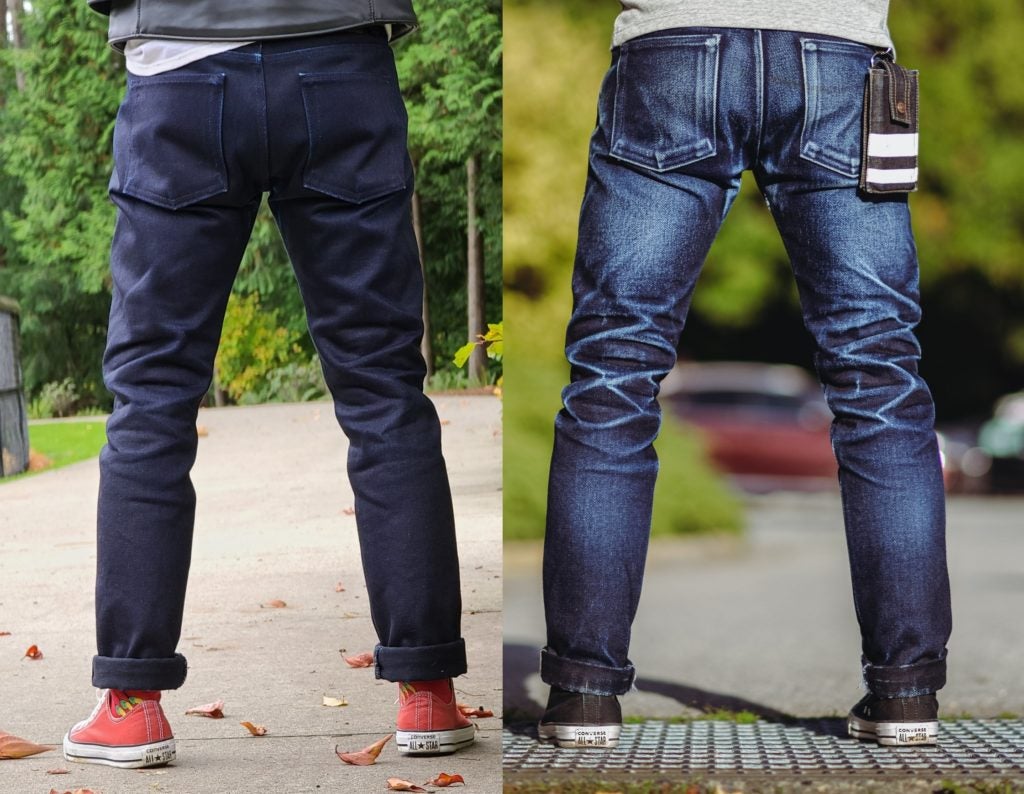
The competition, however, is stiff. This year, Szabo and his co-founder Dave Dickinson will help whittle down the field of 850 participants to 50 finalists. From there, the members of the Indigo Invitational Facebook group will further narrow down the field to 20 faders, from which a panel of nine expert judges will select the winners.
What exactly does a raw denim judge look for? Stories, of course. Specifically, how much of the denim-wearer’s life from the past year is written on their jeans. From a purely aesthetic point-of-view, though, Szabo has a soft spot for crisp honeycombs, or the fade pattern created by the friction behind the knees. He also looks for stacks, where the jeans bunch up on top of the boot, and for the whiskers that etch themselves across the crotch area, often sprawling from the inner thighs to the hips like crow’s feet. “When you see them perfectly executed, it’s just like, ‘Oh!’ — it hits you immediately,” Szabo explains.
Culhane, meanwhile, is drawn to the fields of color and gradient shifts that come with denim fades. “In a way, it’s like wearing living art,” he says. “It moves. It breathes. It changes because of you and with you.”
Like any competition, strategies differ, but there is one common tactic: Wear a single pair of jeans for as many days as possible in a year. Thirty-year-old Johnathan Lam, who works at his car-washing business six days a week, maxed out at 280 days. “I do machine wash inside out for all of my jeans, which is blasphemy to some, but I’m pretty nonchalant about the jeans to worry too much,” he says. “I just wear them hard and hold off on the washing when I can.” (The toughest day he had in his 23-ounce 888 Iron Heart jeans: “Being shorthanded and washing cars in 90-degree heat.” His best day: “Probably when I met my now girlfriend wearing my jeans.”)
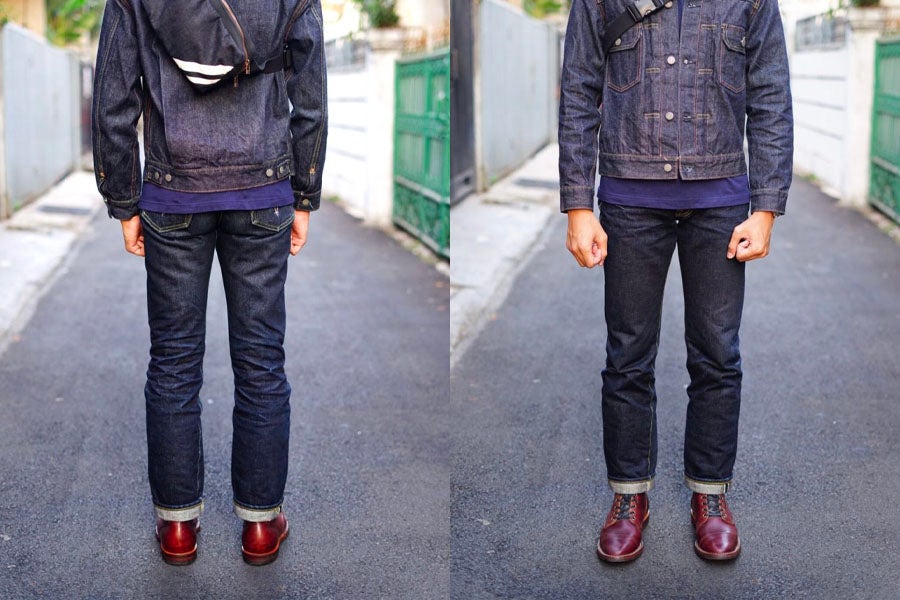
Last year’s winner, 23-year-old Muhammad Rizky of Jakarta, arguably one of the world’s most prolific faders (he won first and third place in two other international fading competitions), is more militant in his approach. He wears his raw denim jeans every day — rain, shine or blistering Indonesian humidity. “I went to university on my motorcycle every day — around 30 kilometers,” he tells me. Despite all of the profuse sweating and searing heat involved in those trips, he only washed his 25-ounce Samurais a total of three times in 365 days.
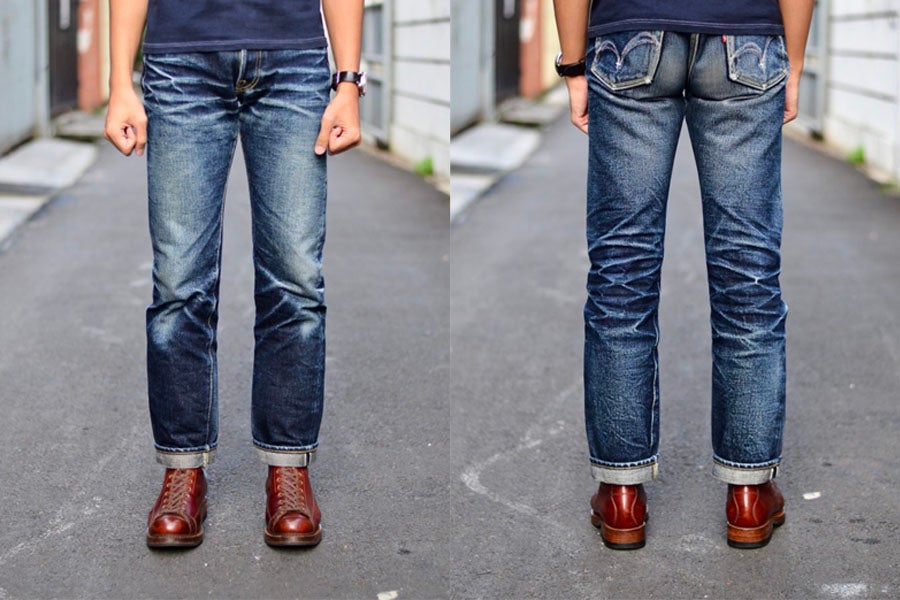
“I’ve heard stories about people sleeping in their jeans — like literally doing 24 hours in them,” says Szabo. He’s heard other stories of people wearing two pairs at a time for meals: “They wear a heavy pair of wider leg jeans over a tighter pair, which just increases the friction.”
Maybe not surprisingly then, not all of them will make it to the finish line (the Indigo Invitational will crown its newest winner in November). “Some age gracefully, others find their end too soon — ripped apart,” says Culhane.
Still others, like Weygaerde’s, require adjustments. “I stitched a little pocket so I could store my brass key in there,” he says. He uses it for opening the engine room of a locomotive, or manually closing a railroad crossing. Best of all, it has a very distinct shape, which — much like his mustache comb and brass fidget spinner — definitely leaves a mark.
